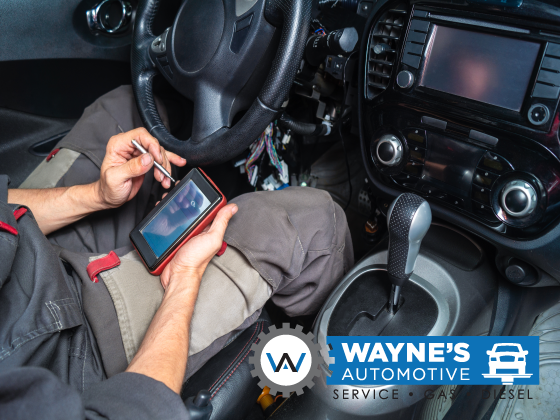Beginning in 1996, Wayne’s Automotive Center automotive specialists could utilize a standardized framework to help figure out what’s going on with a vehicle. This problem framework works with the Engine Control Modules for every car. The Engine Control Module is like a mini PC that screens and controls numerous motor functions.
What is the Engine Control Module
Sensors all through a vehicle send readings to the Engine Control Module. These readings help the mini PC make modifications in different vehicle cores to take into consideration continually changing driving conditions and even to make up for minor issues. Nonetheless, if the ECM experiences a circumstance it can’t account for, it turns on the Check Engine light. (The Check Engine light is known as the “service motor soon” light on certain vehicles.)
The Different Levels Of The Check Engine Light
On the off chance that the Check Engine light is on continuously, it can indicate a problem that should be dealt with soon. If it is blinking rapidly, the vehicle needs prompt service at Wayne’s Automotive Center. At the point when the Check Engine light is on, the vehicle ought not to be driven at high speeds, pull overwhelming weights or tow a trailer. Reno and Sparks drivers need to comprehend that doing so can cause significant harm.
need to comprehend that doing so can cause significant harm.
How We Diagnose A Problem Using Your Engine Control Module
At the point we receive a vehicle with a Check Engine light on, a specialist will examine the Engine Control Module to determine why it tripped on the indicator. The ECM will provide a report in the form of a “trouble code.” Wayne’s technician can take the ECM code and discover what it indicates. The software will likewise tell your Wayne’s Automotive Center specialist what made the issue and how to diagnose it for sure.
Further Investigation Is Often Required
Notice that the inconvenience code does not tell your specialist at Wayne’s Automotive Center precisely what’s going on with the vehicle. It can just tell him where to begin hoping to discover the issue.
Examining an inconvenience code and figuring out what it implies is easy for the experts at Wayne’s Automotive Center. In any case, the resulting process of diagnosing a vehicle’s issue can take a specialist some time. Sometimes, this can signify a critical repair bill. Some vehicle owners erroneously trust that the “inconvenience code” is all they need and figure they can fix the vehicle themselves. Some have tried to set aside some cash by buying a reasonable scanner, or they take their cars to an automobile parts store that offers the output for free.
These alternatives are not the cash savers they appear to be for Reno and Sparks drivers. They can end up costing the car owner additional money in pointless fixes and engine harm.
Example Of An Engine Control Module Trouble Code
For instance, the inconvenience code P0133 indicates “Bank 1 sensor 1 circuit slow response”. Translated, that implies the front oxygen sensor demonstrates a slow reaction time in changing the blend of air and fuel. The apparent end is that you should replace the sensor. The vehicle owner buys a sensor, repairs it and cheerfully goes on his way.
Be that as it may, read the inconvenience once more: an average reaction time in changing the blend of air to fuel. No place does this show the sensor is wrong. There are a ton of components and systems associated with changing the air-fuel mixture. Anyone of these components could be causing a reduced response time. Those include a faulty air flow sensor, an exhaust leak, and an issue in the electrical framework. Another cause can be a hole in the intake manifold. The sensor is just handing-off that the reaction time is moderate; it doesn’t show where the problem lies.
So the vehicle winds up with an oxygen sensor it didn’t require, and the delay in fixing the actual issue may have prompted further harm to the motor. Both are expenses for the driver.
Wayne’s Automotive Center Can Diagnose Check Engine Codes
Low-Cost scanners can’t access the trouble code history stored in the ECM. This working history contains information that can help to diagnose motor difficulty since it can show a developing issue. Wayne’s Automotive Center puts a ton of cash in the top of the line analytic hardware. We use the hardware to identifying problems and access the working history of the motor.
On-board diagnostics, at that point, are a tool to help determine what’s wrong with a vehicle. Diagnostics can’t indicate what part should be fixed or changed, and can’t replace a capable automotive specialist.
So, unless you can expertly repair your vehicle, we implore you to use Wayne’s Automotive Center for all your repairs.

